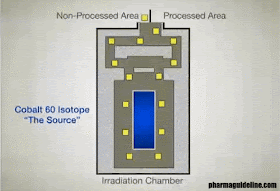There are many different routes through which pharmaceutical products i.e drugs, medicinal chemical, fluids etc. are administered into the body. The different ways through which drugs and other pharmaceutical products are administered into the body can be classified broadly into two simple categories. These two simple categories are enteral also known as gastrointestinal and parental.
Parenteral products are administrated by devices or instruments used to administer pharmaceutical drugs or chemicals into the human body the parenteral way. Parenteral products are also drugs, fluids and chemicals administered the parenteral way. These products include syringes and needles for injecting the drugs through the skin and indwelling catheter. The other parenteral products are the solution for injection, powders to be injected and others e.g liposomes. These products are usually sterilized in pharmaceuticals before being put into use. The use of radiation in the sterilization of parenteral products has been established and used widely by pharmaceutical companies.
Sterilization of parenteral products by radiation has its share of advantages and disadvantages. It is a technique that uses radiation waves to sterilize parenteral products. Sterilization of parenteral products by radiation can be achieved by using different forms of radiation. These different forms of radiation are x-rays, gamma rays and electron beams. Over the decades, sterilization of parenteral products by radiation and gas increased in the pharmaceutical companies. This has been promoted by the regulatory push to adopt the radiation method of sterilization.
Radiation sterilization of parenteral products has its disadvantages as well. In the process of sterilization of the parenteral products, there may be damage to them. The immobilization of the contaminating organism also comes with this risk of damage to the parenteral products. This is so because the radiation either from gamma rays, electromagnetic x-rays and electron beams do not know the difference between the particles making the microorganism or the particles making the parenteral product. The interaction between the radiation and the parenteral products may cause a chemical reaction that may damage or even change the chemical structure of the parenteral products.
Professional handling of sterilization by radiation is necessary in order to avoid accidents which may be observed in case if there are anomalies in the process. All compounds that are subjected to radiation treatment, should be in stable forms. They should have minimal or zero degradation effects after the process, whether they form part of the drug component or medical device. Safety is fostered by global rules on handling and use of radioactive materials since spillage of the same is potentially carcinogenic.
Parenteral products are administrated by devices or instruments used to administer pharmaceutical drugs or chemicals into the human body the parenteral way. Parenteral products are also drugs, fluids and chemicals administered the parenteral way. These products include syringes and needles for injecting the drugs through the skin and indwelling catheter. The other parenteral products are the solution for injection, powders to be injected and others e.g liposomes. These products are usually sterilized in pharmaceuticals before being put into use. The use of radiation in the sterilization of parenteral products has been established and used widely by pharmaceutical companies.
Sterilization of parenteral products by radiation has its share of advantages and disadvantages. It is a technique that uses radiation waves to sterilize parenteral products. Sterilization of parenteral products by radiation can be achieved by using different forms of radiation. These different forms of radiation are x-rays, gamma rays and electron beams. Over the decades, sterilization of parenteral products by radiation and gas increased in the pharmaceutical companies. This has been promoted by the regulatory push to adopt the radiation method of sterilization.
Radiation sterilization of parenteral products has its disadvantages as well. In the process of sterilization of the parenteral products, there may be damage to them. The immobilization of the contaminating organism also comes with this risk of damage to the parenteral products. This is so because the radiation either from gamma rays, electromagnetic x-rays and electron beams do not know the difference between the particles making the microorganism or the particles making the parenteral product. The interaction between the radiation and the parenteral products may cause a chemical reaction that may damage or even change the chemical structure of the parenteral products.
Professional handling of sterilization by radiation is necessary in order to avoid accidents which may be observed in case if there are anomalies in the process. All compounds that are subjected to radiation treatment, should be in stable forms. They should have minimal or zero degradation effects after the process, whether they form part of the drug component or medical device. Safety is fostered by global rules on handling and use of radioactive materials since spillage of the same is potentially carcinogenic.




many thanks for best information.
ReplyDeleteI found those issues which I need.
Regards
Ghias Rahimi
Beena Pharma Kabul Afg.